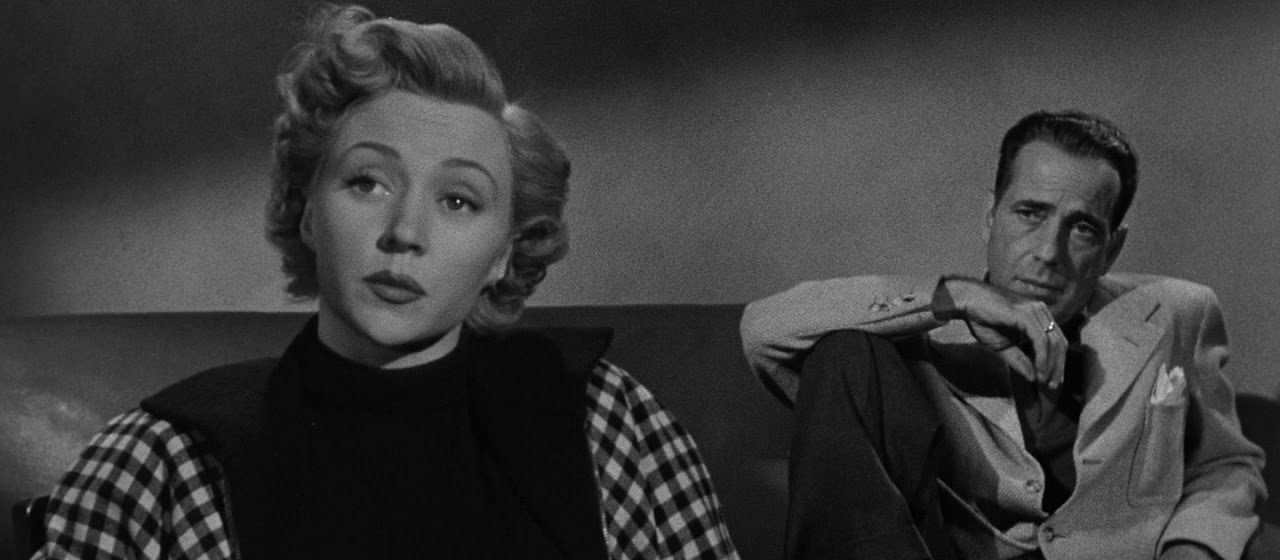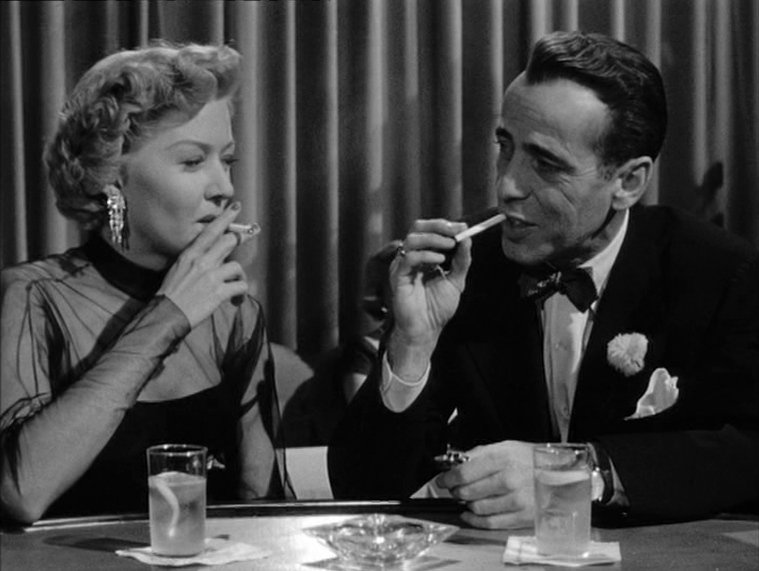

“There’s no sacrifice too great for a chance at immortality.”
Sometimes dusting off a classic feels like an academic exercise. You take pains to understand the context into which it was released, to put yourself in a headspace that pretends later eras of filmmaking haven’t played themselves out yet, while still keeping an eye toward the potential influence of the work before you. But of course, such an endeavor is futile. Inevitably, you find yourself “appreciating” many films that don’t have the contemporary impact of a perennial monument.
Nicholas Ray’s In a Lonely Place suffers no such fate. In fact, in the eyes of many (mine included), it is one of those insurmountable archetypes, even as it eludes standard classification. Usually when I watch a film with the intention of writing about it, I pretty quickly find a viable approach and stick with it. Genre, theme, performance, and so on. Ideally that initial discussion point will lead to others, and eventually the entire film is brought into view at some level of focus. In a Lonely Place bilks such concise analysis because each of its potential entry points all but demand full attention.
Do we hone in on Humphrey Bogart’s against-type portrayal of Dixon Steel, a washed up, sardonic screenwriter with a wicked temper, as he moves between indifference, fear, doubt, angst, and romance with confidence and nuance? Do we instead favor Gloria Grahame’s beguiling turn as his new neighbor Laurel Gray, who sticks her neck out on instinct to act as Dixon’s alibi when he’s accused of murder, and whose perspective gradually comes to dominate the film as the two briefly fall in and out of love? How about the way that Andrew S. Holt’s arresting script ditches genre tropes and allows his characters to take on lives of their own, defy convention, and act in unexpected ways? Or how about its transcendence of genre as it reaches beyond its melodramatic noir template by gently working in various subthemes: the egotism of the artist, the cult of celebrity, the elusive whims of the muse, the fallen nature of man, the willful blindness of romantic obsession, the spiritual damage wrought by the Second World War? (Indeed, In a Lonely Place may be the least “noir” of the bona fide classic noirs, as its murder, investigation, and confession all happen off screen.)

All of those things are worthy of discussion—and many writers with more knowledge and wit than this one have taken a crack at it—but for my money, the primary achievement of In a Lonely Place is its balancing act between jaded cynicism and unabashed romance. These two seemingly contradictory elements are held in tension by a crucial distinction in the film’s romantic plot: that the love between the temperamental screenwriter and his newfound source of inspiration is contingent upon a much more fundamental and profound form of connection; namely, trust. At first, this is entirely instinctive, based on inarticulable feelings. Once the two have come together, however, Laurel jibes with Dix’s idiosyncratic social persona and bleak outlook on life. She not only connects with him on a primal level, but, recognizing his off putting quirks, accepts him as he is, and thus earns his trust. In this way, a beautiful love story develops in which the false accusation takes on a positive note, as Dix comes out the other side buoyed up by the life-giving affections of Laurel.
And yet—as Adrian Martin and Cristina Álvarez López point out in their analysis of the film (which they smartly link to Elaine May’s Mikey and Nicky)—the investigation ultimately becomes a moot point. It matters little whether or not Dix killed Mildred Atkinson (Martha Stewart)—what matters is that he has the capacity to murder. As Laurel discovers to her great anguish, he emphatically does have such a capacity. As signs of his nasty temper begin to surface, seeds of distrust are sown, and the idyllic romance trends sharply downward, brought to an ugly head by Laurel’s distrust rather than a verdict. It’s this walk along the razor’s edge, balancing heartstring-tugging Hollywood sentimentalism and pop-existentialism, that makes In a Lonely Place such a captivating and acutely poignant film.

That and the fact that it’s a film in which all of the elemental cinematic building blocks—performance, script, score, lighting, editing, camera movement, set design—all work in perfect unison to produce scenes of pure cinematic pleasure. Not to mention its almost metatextual self-awareness that surfaces when characters discuss unfaithful book adaptations (in a film that’s a poor adaptation of its source novel) and what ingredients comprise a great love scene (in the midst of a great love scene, tinged with the aforementioned undercurrents of distrust). Or its parallel mirror subplot that suggests, initially with hope, that the genuine artist might survive the profit-oriented system in an uncorrupt state, only to show that hope withering away before our eyes. And that’s the thing. You can look at In a Lonely Place from any number of different angles and it still shines just as brightly. I watched it a second time the day after I first saw it, and I look forward to revisiting it again and again.